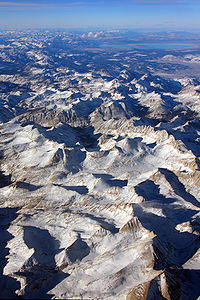
Investigation of Halcyon multi‐leaf collimator model in Eclipse treatment planning system: A focus on the VMAT dose calculation with the Acuros XB algorithm
Sign Up to like & getrecommendations! Published in 2022 at "Journal of Applied Clinical Medical Physics"
DOI: 10.1002/acm2.13519
Abstract: Abstract Purpose The dual‐layer multi‐leaf collimator (MLC) in Halcyon involves further complexities in the dose calculation process, because the leaf‐tip transmission varies according to the leaf trailing pattern. For the volumetric modulated arc therapy (VMAT)… read more here.
Keywords: dose calculation; layer; vmat; leaf ... See more keywords

Artificial Leaf for Solar‐Driven Ammonia Conversion at Milligram‐Scale Using Triple Junction III‐V Photoelectrode
Sign Up to like & getrecommendations! Published in 2023 at "Advanced Science"
DOI: 10.1002/advs.202205808
Abstract: Developing a green and energy‐saving alternative to the traditional Haber‐Bosch process for converting nitrogen into ammonia is urgently needed. Imitating from biological nitrogen fixation and photosynthesis processes, this work develops a monolithic artificial leaf based… read more here.
Keywords: artificial leaf; driven ammonia; conversion; leaf ... See more keywords

Coacervate-Enhanced Deposition of Sprayed Pesticide on Hydrophobic/Superhydrophobic Abaxial Leaf Surfaces.
Sign Up to like & getrecommendations! Published in 2023 at "Advanced science"
DOI: 10.1002/advs.202300270
Abstract: Deposition of high-speed droplets on inverted surfaces is important to many fundamental scientific principles and technological applications. For example, in pesticide spraying to target pests and diseases emerging on abaxial side of leaves, the downward… read more here.
Keywords: hydrophobic superhydrophobic; pesticide; deposition; leaf ... See more keywords

Variation in cloud immersion, not precipitation, drives vascular epiphyte leaf trait plasticity and water relations during an extreme drought.
Sign Up to like & getrecommendations! Published in 2022 at "American journal of botany"
DOI: 10.1002/ajb2.1833
Abstract: PREMISE Epiphytes are abundant in ecosystems such as tropical montane cloud forests where low-lying clouds are often in contact with vegetation. Climate projections for these regions include more variability in rainfall and an increase in… read more here.
Keywords: water; water relations; leaf; cloud ... See more keywords

Leaf volatile and nonvolatile metabolites show different levels of specificity in response to herbivory
Sign Up to like & getrecommendations! Published in 2023 at "Ecology and Evolution"
DOI: 10.1002/ece3.10123
Abstract: Abstract Plants produce diverse chemical defenses with contrasting effects on different insect herbivores. Deploying herbivore‐specific responses can help plants increase their defensive efficiency. Here, we explore how variation in induced plant responses correlates with herbivore… read more here.
Keywords: volatile nonvolatile; nonvolatile leaf; leaf; specificity ... See more keywords

Leaf shape in Populus tremula is a complex, omnigenic trait
Sign Up to like & getrecommendations! Published in 2020 at "Ecology and Evolution"
DOI: 10.1002/ece3.6691
Abstract: Abstract Leaf shape is a defining feature of how we recognize and classify plant species. Although there is extensive variation in leaf shape within many species, few studies have disentangled the underlying genetic architecture. We… read more here.
Keywords: shape; leaf shape; expression; leaf ... See more keywords

Shifts and plasticity of plant leaf mass per area and leaf size among slope aspects in a subalpine meadow
Sign Up to like & getrecommendations! Published in 2021 at "Ecology and Evolution"
DOI: 10.1002/ece3.8113
Abstract: Abstract The composition of vegetation on a slope frequently changes substantially owing to the different micro‐environments of various slope aspects. To understand how the slope aspect affects the vegetation changes, we examined the variations in… read more here.
Keywords: mass per; leaf; subalpine meadow; slope aspects ... See more keywords

Leaf NPK stoichiometry, δ15 N, and apparent nutrient limitation of co-occurring carnivorous vs. noncarnivorous plants.
Sign Up to like & getrecommendations! Published in 2022 at "Ecology"
DOI: 10.1002/ecy.3825
Abstract: Previous meta-analyses suggested that carnivorous plants - despite access to N, P, and K from prey - have significantly lower leaf concentrations of these nutrients than non-carnivores. Those studies, however, largely compared carnivores in nutrient-poor… read more here.
Keywords: stoichiometry; carnivorous noncarnivorous; leaf; non carnivores ... See more keywords

Perfoliate leaves reduce herbivory in the shield‐bracted monkeyflower ( Mimulus glaucescens )
Sign Up to like & getrecommendations! Published in 2022 at "Ecology"
DOI: 10.1002/ecy.3876
Abstract: Many plant species have leaves that are completely fused around the stem, forming a disk or cup, a trait called perfoliation (Appendix S1: Figure S1). This morphology has long fascinated naturalists (Beal & St. John,… read more here.
Keywords: damage; basal; leaf; plant ... See more keywords

Taxonomic implication of leaf epidermal anatomy of selected taxa of Scrophulariaceae from Pakistan
Sign Up to like & getrecommendations! Published in 2020 at "Microscopy Research and Technique"
DOI: 10.1002/jemt.23608
Abstract: The family Scrophulariaceae consists of taxonomically complex genera and species. The delimitation of the taxa within this family is always challenging. In this paper, we studied leaf epidermis anatomical characteristics and its taxonomic significance of… read more here.
Keywords: abaxial surfaces; scrophulariaceae; adaxial abaxial; anatomy ... See more keywords

Trophic discrimination of stable isotopes and potential food source partitioning by leaf‐eating crabs in mangrove environments
Sign Up to like & getrecommendations! Published in 2017 at "Limnology and Oceanography"
DOI: 10.1002/lno.10553
Abstract: Diet composition of leaf-eating mangrove crabs is a puzzle among mangrove ecologists. Nutrient-poor leaf litter can in most cases not support animal growth. Food partitioning (mangrove leaves, animal tissue, and microphytobenthos [MPB]) of sesarmid and… read more here.
Keywords: leaf eating; leaf litter; discrimination; stable isotopes ... See more keywords